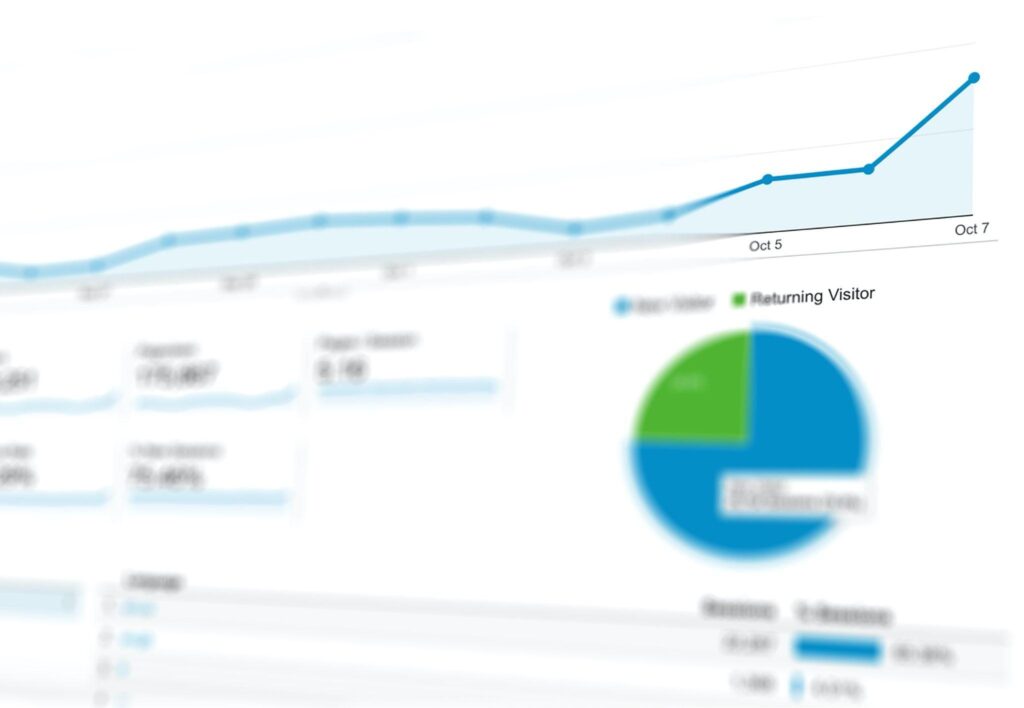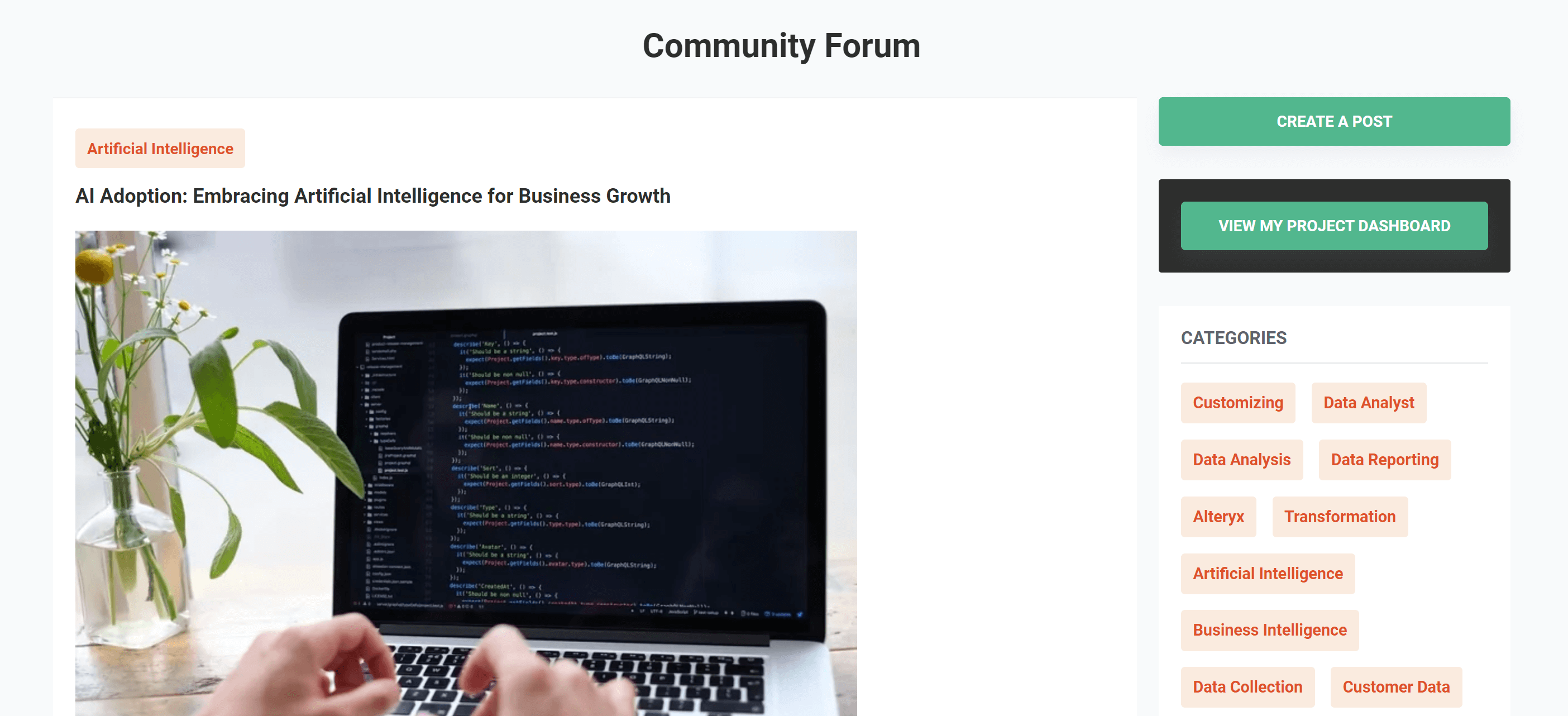5 Ways AI is Revolutionising Data Analytics

The role of data analytics in business decision-making cannot be overstated. It is a crucial process that helps companies make informed decisions about their operations, customers, and strategies. However, the exponential growth of data in recent years has made it increasingly difficult for organisations to manually process and analyse data. This is where artificial intelligence (AI) comes in, providing businesses with the tools to manage and make sense of the vast amount of data available to them.
AI is revolutionising the way data is collected, processed, and analysed, and as a result, it is transforming data analytics. With the aid of AI, businesses can analyse data at a much larger scale and with greater accuracy than ever before. This means that they can gain insights from their data, identify patterns, and make more informed business decisions.
The impact of AI on data analytics is particularly significant in areas such as predictive analytics, natural language processing, machine learning, image and video recognition, and data quality management. These are all critical areas where AI is making a difference, enabling companies to stay ahead of the competition and make data-driven decisions that positively impact their bottom line. In the following sections, we will explore each of these areas in more detail and explain how AI is transforming data analytics.
Predictive Analytics

Predictive analytics is a data analysis technique that uses machine learning algorithms to analyse historical data and identify patterns that can be used to predict future outcomes. AI technology is enhancing predictive analytics capabilities by allowing companies to analyse data faster, with greater accuracy and at a larger scale than ever before.
Predictive analytics has various applications across several industries, such as healthcare, finance, retail, and manufacturing. For instance, healthcare providers can use predictive analytics to identify high-risk patients who are likely to be readmitted to the hospital after being discharged. This can help healthcare providers intervene early and prevent rehospitalisation, leading to better health outcomes and cost savings.
In finance, banks are using predictive analytics to identify fraud, predict customer churn, and identify potential new customers. By predicting customer churn, banks can take preventative measures to retain customers by offering promotions or improving their services, which can lead to increased customer satisfaction and ultimately revenue.
Natural Language Processing
Natural Language Processing (NLP) is a subset of AI that allows machines to understand human language. NLP is transforming data analytics by allowing companies to analyse unstructured data, such as customer reviews, social media comments, and email, to gain insights that would be difficult to obtain manually.
For instance, social media data is a rich source of information that companies can use to understand customer sentiment and identify areas for improvement. With NLP, companies can quickly and accurately analyse social media data to identify trends, customer preferences, and consumer sentiment. This can lead to more informed business decisions and the development of more targeted marketing campaigns.
In the healthcare industry, NLP can be used to analyse patient notes and medical records to identify patterns and improve patient outcomes. By analysing patient notes, healthcare providers can identify patients who are at risk of developing certain conditions and intervene early to prevent the condition from worsening.
Machine Learning

Machine learning is a subset of AI that enables machines to learn from data without being explicitly programmed. Machine learning algorithms can automatically identify patterns and make predictions based on data. Machine learning is transforming data analytics by making it possible to process and analyse data at a larger scale than ever before.
For instance, in the manufacturing industry, machine learning can be used to predict equipment failure before it occurs. This can help manufacturers schedule maintenance before a breakdown occurs, leading to cost savings and improved productivity.
In the retail industry, machine learning can be used to analyse customer data and provide personalised recommendations to customers. By analysing customer data, retailers can identify products that are likely to be of interest to individual customers, leading to increased sales and customer satisfaction.
Image and Video Recognition

Image and video recognition is another area where AI is transforming data analytics. With the proliferation of social media and the widespread use of smartphones and cameras, companies have access to vast amounts of visual data that can be analysed for valuable insights. AI-powered image and video recognition technologies can automatically classify, tag, and extract information from images and videos, enabling businesses to analyse this data on a large scale.
For example, in the retail industry, image and video recognition can be used to analyse customer behaviour and preferences. Retailers can use AI-powered image recognition to analyse images of their customers, such as those captured by in-store cameras, to identify patterns in their behaviour and preferences. This can help retailers optimise their store layouts, product placements, and marketing campaigns, ultimately leading to better sales and customer engagement.
In the healthcare industry, image and video recognition can be used to analyse medical images, such as X-rays, MRIs, and CT scans. AI-powered image recognition can help doctors and researchers identify patterns and anomalies in medical images that may not be visible to the human eye. This can help with early detection of diseases, more accurate diagnoses, and better treatment options for patients.
Overall, AI-powered image and video recognition is transforming the way businesses and industries analyse and make use of visual data. By automatically analysing and extracting insights from images and videos, companies can gain valuable insights and make data-driven decisions that positively impact their bottom line.
Data Quality Management
Data quality management is another area where AI is revolutionising data analytics. Data quality is critical for accurate data analysis, and AI-powered data quality management solutions can help companies improve data quality and ensure that their data is fit for purpose.
For instance, AI-powered data quality management solutions can identify and correct errors in data, such as missing or duplicate data. This can help companies avoid making decisions based on inaccurate data, leading to better business outcomes.
In the finance industry, data quality management is critical for compliance with regulations such as the General Data Protection Regulation (GDPR) and the Basel III regulations. By using AI-powered data quality management solutions, financial institutions can ensure that their data is accurate and compliant with regulations, avoiding hefty fines and legal penalties.
In conclusion, AI is revolutionising data analytics by making it possible to analyse data at a larger scale and with greater accuracy than ever before. Predictive analytics, natural language processing, machine learning, image and video recognition, and data quality management are just a few examples of how AI is transforming data analytics.
With the growing amount of data available to companies, the ability to quickly and accurately analyse data is becoming increasingly important. AI-powered data analytics solutions can help companies gain insights from their data, identify patterns, and make more informed business decisions.
As AI technology continues to advance, we can expect to see more innovative solutions for data analytics in the future. Companies that adopt AI-powered data analytics solutions are likely to have a competitive advantage in their respective industries, and we can expect to see more companies incorporating AI into their data analytics processes in the years to come.
Get your data results fast and accelerate your business performance with the insights you need today.



